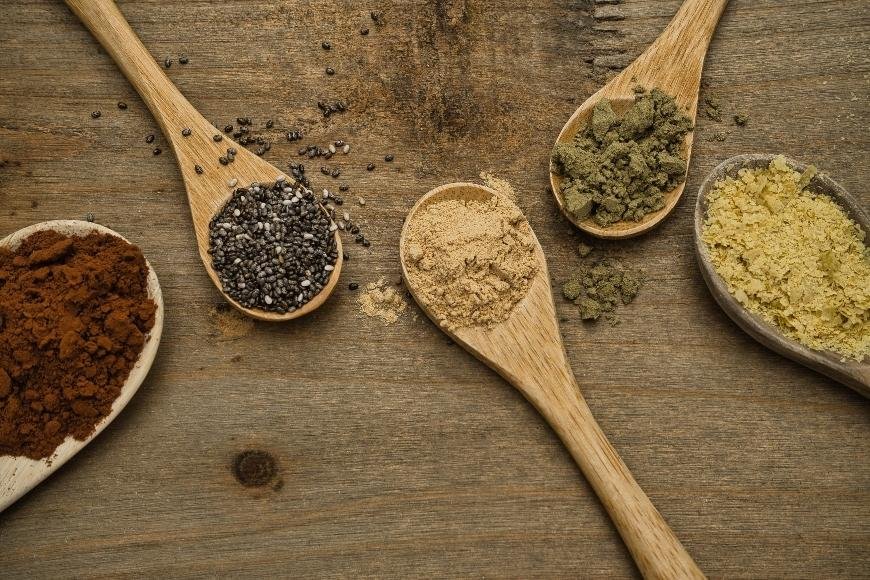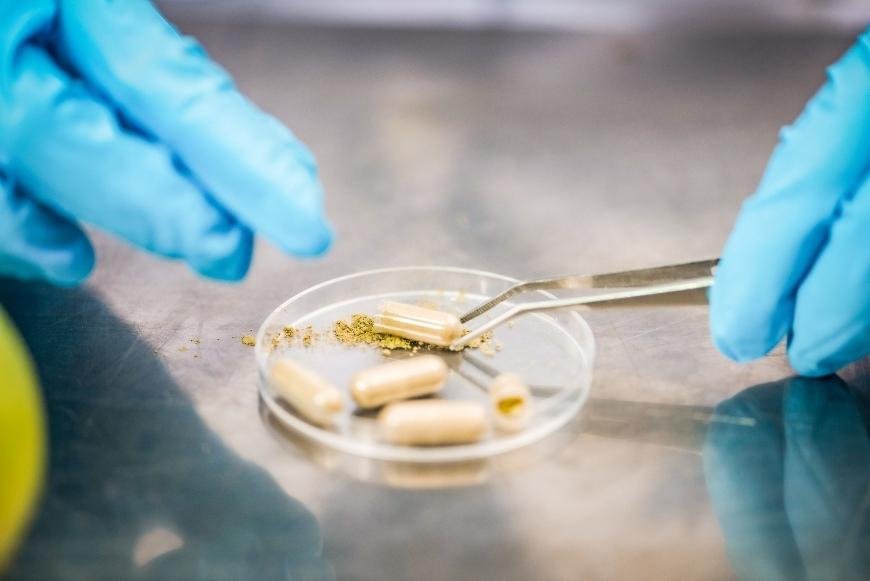How to Extract Maca
Explore our guide on how to extract maca root. Learn the process, storage tips, and understand potential risks today!

Unraveling the art of extracting maca root can be a rewarding venture, both for its health benefits and the satisfaction it brings. Maca is an incredible superfood with a rich history, but how does one go about extracting this powerhouse plant?
To extract maca, we'll provide you with a detailed guide outlining the materials needed and step-by-step instructions for this rewarding venture. We've outlined all the materials you need and provided a step-by-step process that simplifies this intricate task.
Furthermore, we will discuss proper storage methods for your extracted maca to ensure its potency remains intact. Lastly, while extraction can be fun and beneficial, potential risks exist that every extractor should know about.
Dive into our comprehensive guide and discover everything there is to know about extracting maca root!
Table of Contents:
- What is Maca?
- Why Extract Maca?
- Essential Items for Maca Extraction
- Step-by-Step Guide to Extracting Maca
- Properly Storing Your Maca Extract
- Potential Risks of Extracting Maca
- FAQs in Relation to How to Extract Maca
- Conclusion
What is Maca?

Maca, scientifically known as Lepidium meyenii, is a plant native to Peru. It's grown in the Andes mountains and has been used for centuries due to its numerous health benefits. Maca root, often referred to as Peruvian ginseng, is a mineral-rich source of zinc, iron and calcium.
The Mighty Maca
This superfood is packed with an impressive range of bioactive compounds and nutrients including proteins, fiber, and various beneficial fatty acids. Not only that, but it also boasts more than 20 amino acids, 8 of which are essential, along with plenty of phytonutrients.
Ancient Roots
The most remarkable thing about maca root, though, might be its long history of use among rural Andean farming communities. This hardy tuber was consumed by Incan warriors for strength and endurance before battles. Nowadays, maca root is acclaimed around the world for its nutritional benefits as well as its potential to enhance energy levels, elevate moods and even raise libido.
Why Extract Maca?
Maca, a root vegetable native to the Andes Mountains, is renowned for its numerous health benefits. But why extract maca? The answer lies in its concentrated form.
Extracting maca isolates and enhances its beneficial compounds, resulting in a more potent product that allows users to experience maca's full range of benefits. From boosting energy levels and improving mood to enhancing sexual health and fertility, maca has got you covered.
The extraction process also makes it easier for our bodies to absorb these nutrients. By breaking down the plant material during extraction, we can bypass some of the digestion required when consuming raw or cooked maca. This means your body can utilize more of what this superfood has to offer.
Beyond absorption rates and potency, another reason people choose to extract maca is convenience. In extracted form, whether as a powder or liquid, you can easily incorporate it into smoothies, teas, or other recipes without altering their taste too much.
In short, extracting maca provides an efficient way to enjoy this nutrient-dense root at its best.
Essential Items for Maca Extraction
If you're ready to extract maca, you'll need a few key items. First up, fresh maca roots - you can find these at health food stores or online from reputable sellers.
For successful extraction of maca's beneficial compounds, you'll need to grind the root into a fine powder with a high-quality blender or grinder. This step is crucial for easy extraction of maca's beneficial compounds.
For the extraction process, you'll need grain alcohol (commonly known as food-grade ethanol) to act as a solvent. Safety first, people.
A cheesecloth or fine mesh strainer is necessary for separating the liquid extract from the solid plant material after soaking. And don't forget to store your extracted maca in dark glass bottles to maintain its potency over time.
With patience and practice, anyone can master maca extraction. Trust us, it's worth it for the health benefits.
Step-by-Step Guide to Extracting Maca
Extracting maca may seem daunting, but with a little patience and attention to detail, it's a breeze. Here's a simple guide:
Step 1: Harvesting the Maca Root
Harvest mature maca roots, which are typically around 5cm in diameter.
Step 2: Cleaning and Drying
Thoroughly clean the roots under running water to remove any dirt. Air dry them completely on a clean cloth or paper towel.
Step 3: Grinding the Roots
Reduce the dried roots to a powdery consistency with a food processor or grinder, thus increasing surface area and aiding extraction. This increases surface area and aids in extraction.
Step 4: Extraction
Soak the ground maca root in 96% ethanol for about two weeks, shaking occasionally. Make sure to work in a well-ventilated area as ethanol fumes can be harmful if concentrated. After soaking, strain the liquid through cheesecloth into another container. This strained liquid contains your extracted maca compounds..
Properly Storing Your Maca Extract

So, you've successfully extracted your maca and now you're wondering how to keep it fresh and potent. Fear not, my friend, for I have some tips to help you store your maca extract like a pro.
Location
First things first, find a cool, dark place to store your maca extract. Direct sunlight and heat can degrade the active compounds in the extract, making it less effective. A pantry or cupboard is a great spot to keep it safe.
The Right Container
Choosing the right container is crucial to preserving the quality of your maca extract. Opt for an amber glass jar with a tight-fitting lid. This type of container protects against both light and air exposure, keeping your extract fresh and potent.
To Refrigerate or Not to Refrigerate?
Storing your maca extract in the refrigerator is not compulsory, yet it can extend its shelf life, particularly during hotter periods. If you have the room, consider storing it in a chilled area to ensure its lasting freshness.
Label
Always label your containers with the date of extraction. By noting the date of extraction, you can easily keep track of how long your maca extract has been stored and its shelf life. Plus, it'll help you keep track of your stash.
Now that you know how to properly store your maca extract, you can enjoy its benefits for even longer. Happy extracting.
Potential Risks of Extracting Maca
Maca is generally safe to consume, but extracting it at home can pose some risks. One major concern is contamination. If not done properly and in a clean environment, your extracted maca could be contaminated with harmful substances.
Improper extraction techniques may also lead to loss of beneficial compounds present in maca. It's important to follow a reliable extraction guide carefully to ensure you're getting the most out of your maca root.
The use of certain solvents during extraction can also pose health risks if they are not handled correctly or disposed of safely after use. Some solvents used for plant extractions can be flammable or toxic, so always take necessary precautions when handling them.
Lastly, while rare, some people might experience allergic reactions from consuming homemade extracts due to unknown contaminants that were introduced during the extraction process.
Contamination Concerns
Contamination is a major concern when it comes to extracting maca at home. If you're not careful, your extracted maca could be contaminated with bacteria or other harmful substances. For successful extraction of maca, ensure you are in a tidy environment and using uncontaminated tools.
Loss of Beneficial Compounds
Improper extraction techniques can lead to loss of beneficial compounds present in maca. To get the most out of your maca root, it's important to follow a reliable extraction guide carefully. This will help ensure that you're getting all the nutrients and benefits that maca has to offer.
Health Risks of Solvents
The use of certain solvents during extraction can pose health risks if they are not handled correctly or disposed of safely after use. Some solvents used for plant extractions can be flammable or toxic, so always take necessary precautions when handling them. Be sure to thoroughly read the safety guidelines prior to utilizing any solvents.
Allergic Reactions
While rare, some people might experience allergic reactions from consuming homemade extracts due to unknown contaminants that were introduced during the extraction process. If you experience any adverse reactions after consuming homemade maca extract, stop using it immediately and consult a healthcare professional.
Given the potential risks associated with consuming homemade maca extract, it is important to take necessary precautions for safety.
FAQs in Relation to How to Extract Maca
How is maca extracted?
Maca is dried, ground into a powder, and then extracted using alcohol or water to concentrate the beneficial compounds.
What's the best way to take maca?
For maximum benefits, take maca in its extracted form.
Is maca extract superior to maca powder?
Yes, maca extract has higher concentrations of beneficial compounds than raw powder.
What distinguishes maca root from maca extract?
Maca root is the raw plant, while maca extract is the concentrated form of the root.
Conclusion
Extracting maca can be a simple process that yields many benefits.
First, wash and peel the maca root.
Next, chop the maca root into small pieces and let it dry in the sun for a few days.
Once the maca is dry, grind it into a fine powder using a blender or food processor.
Then, mix the maca powder with a high-proof alcohol, such as vodka or rum, in a jar and let it sit for at least two weeks.
After two weeks, strain the mixture through a cheesecloth or coffee filter and store the extract in a dark glass bottle.
Finalize the extraction process by keeping in mind storage requirements and any potential hazards.






































































































































